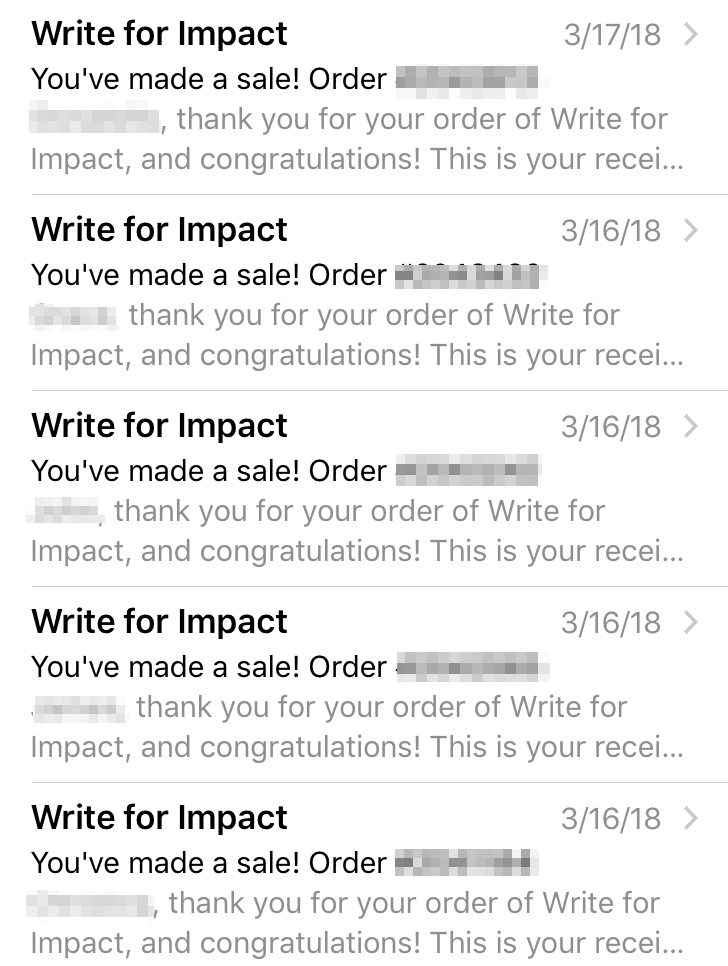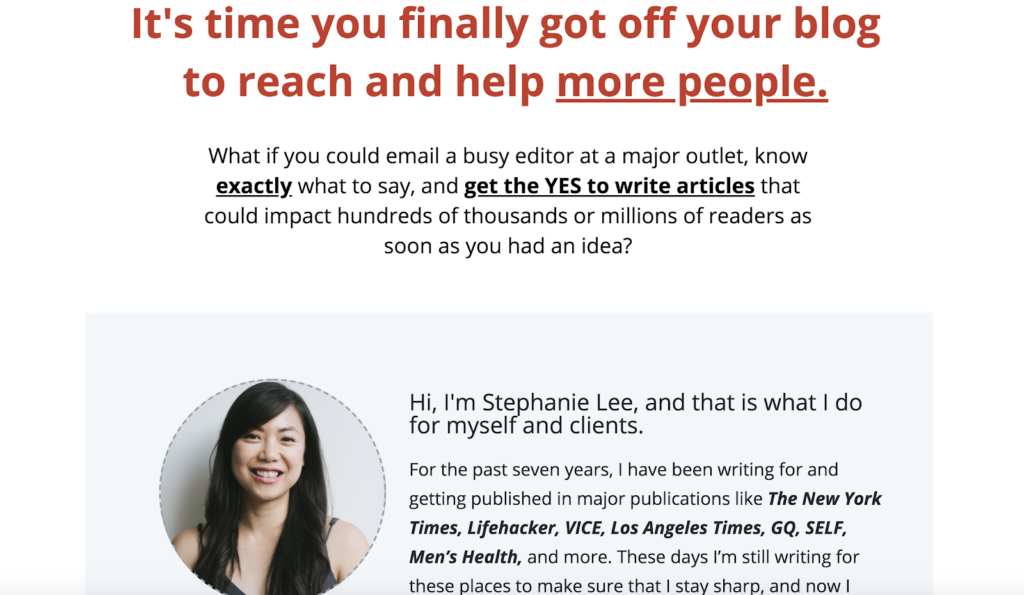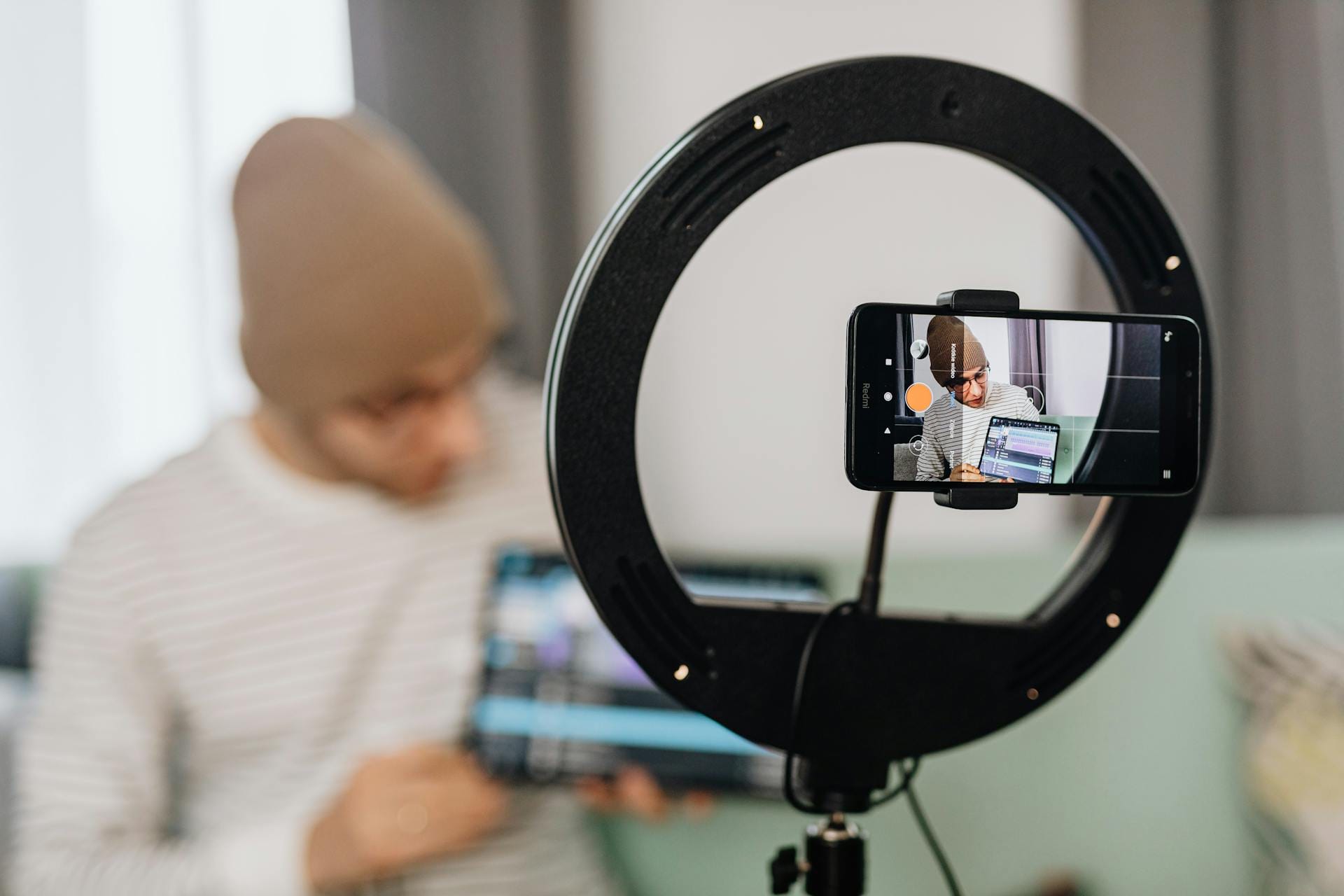
4 “ah-ha” moments from writing my first sales page
You never forget where you were the first time you made a sale.
I was at dinner with my mom when I saw the notification email from SamCart (the checkout service I use). I just happened to have been checking email while our server was taking our order. The subject line “You’ve made a sale!” stopped me mid-scroll.
Oh my gosh, I thought, someone had actually bought my course — my sales page worked!
I stood up, unable to sit still any more as excitement swelled in my chest, and promptly announced that dinner and dessert would be on me. (My mom was more excited about this news than she was about the sale.)

My first sales page conversion is one of those “firsts” that I will cherish for years and years. More so because I had really struggled to write that page.
Many of the articles I’d read about sales pages made the process of writing this first one intimidating as heck. They’d say things like: talk about yourself, but don’t talk too much about yourself; create a compelling offer, but make sure you get the pricing right; focus on the benefits, not the features … but mention the features later — wha?!
It was overwhelming.
Thankfully, I had some breakthrough moments that helped push me past the mental hang-ups, confusion, and doubts, and I’d like to share them with you. If you’re struggling to just start writing your first sales page, I hope that these insights will help carry you through.
Breakthrough #1: Your sales page doesn’t need to be long and complex
I’ve written plenty of 2,500 plus–word articles. I’ve even written 80,000-word (video game) strategy guides. Length and complexity never used to phase me … until I had to stare down this sales page.
Like most people doing something new, I looked to other people’s awesome sales pages for what the bleep to do. If Successful Entrepreneur A and Successful Entrepreneur B wrote text-filled monstrosities that seemed to scroll on and on, maybe mine had to be overly long and complex too.
The thought of making a “perfect” sales page daunted me. But one of my friends turned my perspective upside down. He simply said:
“Look, your page doesn’t need to be perfect right now. It just needs to work.”
In that moment, it was as if the miasmic cloud around my head had lifted, and I finally saw that a sales page is only a sales page when it can actually make sales.
Duh.
Takeaway: Your first sales page doesn’t need to be complex or “optimized.” It needs to work, aka get you sales. This is a much more attainable goal when you’re starting.
Like this blog post? Learn how to create amazing content like this that attracts and engages your target buyers with our FREE Ultimate Guide To Remarkable Content.
Breakthrough #2: You need a CLEAR customer to write to
The course I sold taught writers how to get their articles published in major outlets. I could position it for a variety of people: niche bloggers and freelance writers, people looking to make side cash, aspiring digital nomads, solopreneurs, and so on.
But if I had tried to write the sales page for every one of them, who each had their own unique pain points and frustrations, it would’ve been unfocused, made far less of an impact, and frankly, been impossibly difficult to write.
So, how did I decide?
To put it succinctly: experience … and testing.
Through my experiences as an editor over the years, I noticed that many of the fitness experts in my network seemed to just share information with their peers, not their target customers. They’d tell me they want to help more people, but there’s just one problem: it’s hard to help more people when the reach of their blog post is limited.
This eventually led to a beta version of my course, which allowed me to validate my idea and learn more about my most interested buyers. (You can read more about my experiences getting over my fear of selling my beta course here.)
So, putting together the feedback I’d gotten from the beta and the time I’d spent talking to people about their fears, hopes, and frustrations, I steered the sales page for my full-fledged course toward these experts that have a LOT of expertise to offer but have trouble getting more readers to care, as you can see in my headline:

Takeaway: Focus on one specific customer. For me, I imagined that I was talking to a particular friend of mine. As a result, writing the sales page was a lot smoother than I’d initially anticipated.
Breakthrough #3: Copywriting is a totally different skill set
This subhead might scream “OBVIOUSLY!” But my writing background comes from a long history of writing articles for more “traditional” publications. So when I was first exposed to copywriting, I hated the fact that every sentence was its own line.
Kind of like this.
Line by line.
And you know the most surprising thing?
Somehow…
I would keep reading.
Because good copywriting seems to hone in on our insatiable itch for closure.
It’s why we hate cliffhangers and always want to know what’s next.
For the longest time, I had staunchly resisted acknowledging copywriting as “real” writing and learning more about it. I even challenged myself to write sales copy as if I were writing a normal article. Of course, this was just my ego spitting game. My stubbornness took a 180 when the same wise friend from earlier simply said:
“It’s just different. You’re not going to care when your page makes you money.”
Holy shit, lightbulb moment.
So true.
I stopped caring once I recognized that copywriting was simply different and effective for a reason. I’ve since learned that it’s more nuanced than writing an article on, say, how to become a digital nomad, because, according to great copywriters, every single word and sentence should essentially leave readers gasping for air; and their only oxygen is whatever you’re offering.
But here was my struggle: What do I include to pack that punch? What do I cut?
For more insight into answering those questions, I asked our resident copywriting sensei, Ryan Johnson, to elaborate on his process for assessing his sales copy. He said:
“The best test for whether my sales copy is good enough is if I’m itching to buy the product myself. Keep in mind that as the copywriter [at GrowthLab and I Will Teach You to Be Rich] I already have free access to the product. So the sales page better be so damn compelling that I want to buy it anyway. I should be wishing I could stop writing this sales page so I can use the product right then and there. If I’m not feeling that, my work isn’t done.”
Johnson also notes that having other skilled copywriters give you feedback will help you improve exponentially.
Takeaway: You’re probably not going to nail the copy this time around, and that’s OK. Just practice, practice, practice to keep developing that eagle eye to sense when something is “off,” which could mean you have a bad sentence, the wrong word, a weak setup, or any number of things.
Breakthrough #4: A sales page doesn’t always make the selling easier
When I sold my beta course, I didn’t have a sales page to show. Or a website. Or even a minimum viable product. I had a detailed outline in a Google Doc. I remember telling myself, after I’d tiredly typed out a detailed response to the 14th person about what to expect with my beta, that the next time I’d sell anything I would for sure have a sales page.
How much easier that would be … or so I thought!

Unfortunately, the reality popped my fantasy balloon.
It turned out that selling the much-improved version of my course was just as much work, if not more so. I did the whole sales shebang as simply as I could understand it. It involved creating an email sequence, which pitched my course at the very end. And it worked to an extent.
As Johnson points out: “Even the best sales page only converts a fraction of the time.”
My sales page DID convert about a fourth of my sales (which was awesome!), but if I wanted more sales I had more work to do.
In the end, I had spent weeks actively chasing down leads, talking to people on Facebook, talking to people to talk to their people, and hopping on phone calls to — gulp — talk to more people.
Takeaway: Initially, I thought that my sales page would be a shortcut. It wasn’t. Don’t rely on your sales page to do most of the work, especially when you’re just starting out. ***
It’s easy to get stuck thinking about all the nuances of a killer sales page, but the two most important things for your first sales page?
Just get it out there and make sure it works.



